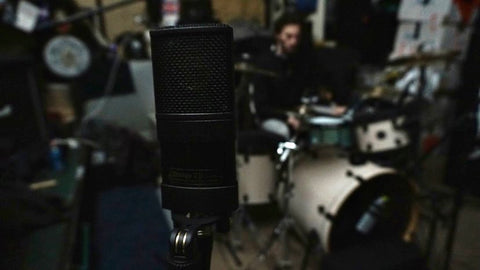Hello, and welcome back to the blog! It’s the start of the last few months of the year, and what better way to enter them, but with a new focus? This month, we’ll be taking a deep dive into the Vintage series in a Vintage Series Breakdown, giving you all the information you need about each mic within our line up and why you should have them within your mic locker for use all the time!
This week we start with the V11, and each week we’ll be exploring the entire range, starting from the darkest and warmest, through to the brightest and most silky.
Let’s dive in!
The V11 Transforms Recordings
That title is no joke, it honestly was an epiphanous moment when I first came across the V11 and used it for the first time myself; however, that wasn’t the first exposure I had to it. The first time I heard the V11 was within a video by Ryan Bruce (Fluff), who highlighted how incredible it sounded, just by itself, on electric guitar cabinets. Until I watched that video, I had a very narrow view of how useful LDC (large diaphragm condensers) could be on guitar or bass cabs, let alone how much richness and body they added.
I’ll be honest, I genuinely thought that ribbon mics were the only option alongside a dynamic microphone such as the HH1, as they countered the inherent harshness that dynamic mic capsules have due to their design. I was so, so wrong about that. The V11 is probably the closest LDC I’ve used compared to what a ribbon microphone can do in regards to warmth, but what the V11 allows which ribbons don’t, it the integrity of that high end sparkle we love from condensers; think of the V11 as the perfect midpoint between both types of capsules, but retaining its own identity all at the same time. You can hear exactly what I’m talking about in the same video I mentioned above, below:
Revolutionize your Drum Rooms
Upon first getting the V11 through, I knew immediately after the first use how much I wanted a second to pair with the first, in order to utilize them both within stereo recordings, such as on drums, acoustic guitar, etc. What I didn’t know for sure was just how impactful they would ultimately become with regards to the workflow I had, my commitment to choices within recording and engineering a session, or just how under-value they are (in my opinion) compared to the rest of the line we have available.
There’s 2 main places where the V11 really took my breath away upon hearing them for the first time on a source. I’ll start with a problem I had firstly; when I was setting up the prior night to the first day's recording, I noticed just how bright the cymbals were that the drummer wanted to use. Of course, preference is preference and as such, I’d already found several solutions to problems I knew I’d inevitably have had when mixing the record (let’s be honest, no one likes shrill cymbals!). My first solution was to place them on a slight axis to mitigate some of the high-end, but then I remembered how warm the V11 pair I brought alone was, so I hooked them up to an XLR cable each and immediately, the problem was solved. The perfect counterbalance to bright cymbals, and with very little time lost once I realized that they were.
The second (and main reason) that they can completely revolutionize drum recordings is when they’re put to use as a spaced A/B room mic pair. It’s so hard to articulate just how wonderful they sounded on that first take - I guess this is either one of those examples where you either had to be there or, better yet, you hear it for yourself! It was magical hearing how much depth and richness they brought to the overall recording; you might say it added a 3rd dimension I didn’t know existed until I heard them!

